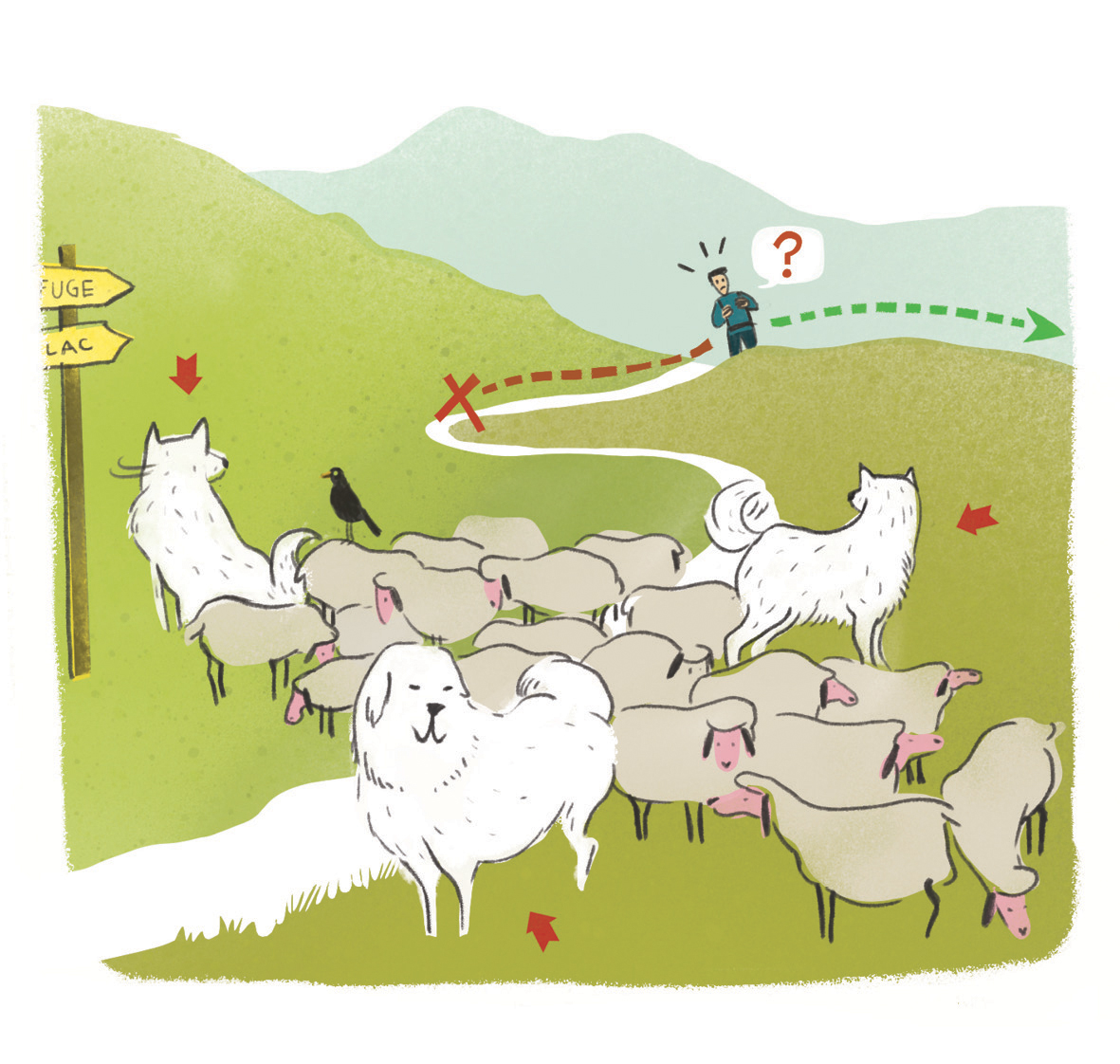Lake Distroit
7 points of interest
 Fauna
FaunaThe common wall lizard
Dans les Ecrins, ce petit lézard méridional gris ou marron peut être confondu avec le lézard vivipare. Il s'en distingue par une tâche noireà l'insertion des pattes. On le trouve, jusqu'à 2 500 m d'altitude, en divers milieux naturels bien exposés au soleil mais également en zones anthropisées. Le lézard des murailles semble actuellement en expansion vers le nord. Les voies de chemin de fer ont permis une progression de la colonisation grâceà des aménagements constituant des habitats favorables.
 Fauna
FaunaCrested tit
It is a small passerine in the tit family Paridae. It has brown plumage on its back, lighter on the underside. What makes it easy to identify is the triangular crest adorning its head. It is a year-round resident that lives in conifer forests. In summer, it eats insects but becomes a seed-eater in winter. Outside the breeding season, crested tits, in the company of other tits, wrens and various other passerines, congregate into boisterous flocks which the French call rondes (patrols). Fauna
FaunaYellow Hammer
In the bottom of the valley, at the beginning of the summer, you will certainly hear, coming from the summit of a bush or a tree, the song composed of several notes in the same tone followed by a final higher or lower note... With binoculars, you can distinguish a bird with yellow and white feathering, the well named Yellow Hammer. It is a male, the female is more discreet as much in song as in its feathers! Listen well: Beethoven must have been inspired by this song when composing the first notes of his 5th symphony!
 Fauna
FaunaChamois
An emblematic alpine animal, the chamois or « rock goat » has short, black, hooked horns. Like the ibex it is more easily observed through binoculars, especially in the morning. Les chèvres and esterlons (young one year old males) like to be part of big herds; however, the billy goats stay rather isolated and only rejoin the females at mating time. In winter the Chamois need plenty of tranquillity in order to preserve their reserves of fat which help them to survive in the cold season.
 Fauna
FaunaRed-billed chough
A member of the corvid family, it closely resembles the Alpine Chough (which can also be seen in the area). It takes a little experience to tell them apart by their silhouette, but the beak is the perfect criterion: red, long and curved for the red-billed, yellow and short for the Alpine. An insectivore, the chough feeds on the ground, hunting for invertebrates with its beak. It is territorial and will defend its breeding site. Its speciality is swooping, twisting and looping in the air.
Common in the Alps at the beginning of the 20th century, its populations have since declined sharply, and its presence is a sign of the rich biodiversity of high-altitude meadows. Fauna
FaunaGolden eagle
Near the mountain slopes, in the warmest hours of the day, a large bird circles in the sky, making use of the wind to climb. Soon the brown silhouette disappears into the blue sky, hidden by the altitude. The eagle patrols its vast territory, and no detail escapes its legendary eyesight. It also spends long hours perched and still, cleaning its plumage or looking out for its next victim. Although it steers clear of man, it is still quite easy to spot a royal eagle alone or with its “other half”, since adults generally live in couples. Its large size, dark colour, rectangular wings and frequent flights across the sky make it almost a familiar sight for anyone who knows how to “watch” the mountains.
 Fauna
FaunaNorthern Wheatear
From the end of April, the rocks studding the alpine pastures serve as perches for the spotted sparrow, just back from its migration. Often perched on an outcrop, it surveys its surroundings for insects. The male appears first: when adorned in mating plumage, he has a grey head and back, a Zorro mask over his eyes, a white belly and dark wings. He is easily recognised in flight by its white rump and the black T on his tail. The female is paler with less contrasts.
Description
.
- Turn right before the bridge and head up towards Lake Distroit on the narrow path that leads steeply into the forest.
- Follow the signposted path when you reach the clearings, ford the small stream and then climb back up into the mountain pasture.
- Turning into the hanging valley, continue on the path to the lake.
- Return via the same route on the way down.
- Departure : Muandes car park, Rabioux valley, Châteauroux-les-Alpes
- Arrival : Muandes car park, Rabioux valley, Châteauroux-les-Alpes
- Towns crossed : Châteauroux-les-Alpes
Altimetric profile
Recommandations
 In mountain pastures, protection dogs are there to protect the herds from predators (wolves, etc.).
In mountain pastures, protection dogs are there to protect the herds from predators (wolves, etc.).
When I hike I adapt my behavior by going around the herd and pausing for the dog to identify me.
Find out more about the actions to adopt with the article "Protection dogs: a context and actions to adopt".
Tell us about your meeting by answering this survey.
Information desks
Maison du Parc de l'Embrunais
Place de l’Église, 05380 Châteauroux-les-Alpes
Information, documentation, exhibition, screenings, products and books of the Park. Accessible to people with reduced mobility. Free admission. All animations of the Park are free unless otherwise stated.
Access and parking
Parking :
Source

Report a problem or an error
If you have found an error on this page or if you have noticed any problems during your hike, please report them to us here:

